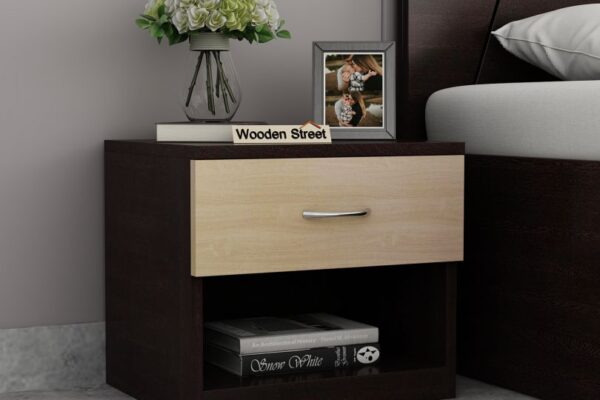Let’s be honest—how often do you clean your makeup brushes?
If your answer falls somewhere between “not often enough” and “what’s brush cleaning?”, you’re not alone. Most of us know that dirty brushes can lead to breakouts, patchy makeup, and even skin infections, but cleaning them still feels like a chore. The good news? It doesn’t have to be that way. The best makeup brush cleaner can make the process quick, effective, and even a little satisfying.
In this post, we’re diving into how to properly clean your makeup brushes, the tools that actually work, and what to look for when choosing a makeup brush cleaner that’s worth your time.
Why Clean Makeup Brushes Matter
Makeup brushes touch your skin every day. They pick up natural oils, old product, and sometimes bacteria. When you don’t clean them regularly, you’re applying all of that buildup back onto your face. The result? Clogged pores, uneven makeup application, and even allergic reactions.
Here’s what happens when you skip regular brush cleaning:
-
Breakouts: Bacteria builds up and transfers to your skin.
-
Poor application: Old residue affects how makeup goes on.
-
Shorter brush life: Product buildup can break down bristles.
Whether you wear makeup daily or just occasionally, keeping your brushes clean helps your skin and your tools stay in top condition.
What Makes the Best Makeup Brush Cleaner?
Not every cleanser labeled “brush cleaner” gets the job done. The best makeup brush cleaner should strike a balance between effective cleansing and gentle care.
Look for These Qualities:
-
Non-toxic ingredients: You don’t want harsh chemicals soaking into bristles that touch your face.
-
Oil-dissolving power: Especially important for foundation or cream-based makeup.
-
Minimal drying time: Waiting overnight for brushes to dry isn’t ideal when you need them daily.
-
Compatibility: Some brushes (especially natural-hair ones) require gentler formulas.
Think of it like skincare for your tools—gentle but effective is the name of the game.
Manual Cleaning vs. Makeup Brush Cleaner Machines
Now let’s talk methods. There are two primary ways people clean brushes: by hand or with the help of a tool like a makeup brush cleaner machine.
Manual Cleaning
This is the traditional method and can be done with a brush shampoo or gentle soap. You wet the bristles, apply cleanser, and swirl them on your hand or a textured mat. It works well for deep cleaning but can be time-consuming.
Pros:
-
Full control over pressure and movement
-
Cost-effective
-
Gentle on delicate brushes
Cons:
-
Takes time
-
Brushes may take hours to dry
Makeup Brush Cleaner Machines
These gadgets spin your brush in a solution and then dry them in seconds using centrifugal force. They’re popular for how fast and hands-free the process is.
Pros:
-
Cleans and dries in under a minute
-
No physical scrubbing
-
Reduces drying time to almost zero
Cons:
-
Not always effective on dense brushes
-
Batteries or charging required
-
Slight learning curve for beginners
Both methods work, but a cleaner machine can make regular maintenance feel less like a chore—especially if you have a lot of brushes.
How Often Should You Clean Your Brushes?
The frequency depends on how often you use them and the type of product they’re used for. Here’s a general guideline:
| Brush Type | Cleaning Frequency |
|---|---|
| Foundation & Concealer | Once a week |
| Powder & Blush | Every 1–2 weeks |
| Eye Brushes | Weekly |
| Lip Brushes | After every use |
| Sponges or Beauty Blenders | Every 2–3 days |
If you’re prone to acne or have sensitive skin, consider cleaning more often to avoid flare-ups.
Step-by-Step | How to Clean Your Brushes Properly
Cleaning your brushes doesn’t have to be a hassle. Whether you’re using a makeup brush cleaner machine or sticking with traditional methods, here’s how to do it right:
Manual Method:
-
Wet the bristles with lukewarm water (avoid the ferrule).
-
Apply cleanser to the bristles.
-
Gently swirl on your palm or a brush cleaning mat.
-
Rinse thoroughly until the water runs clear.
-
Squeeze excess water and reshape the bristles.
-
Lay flat to dry, preferably with the bristles angled downward.
Machine Method:
-
Attach the brush to the machine’s collar.
-
Dip into cleaning solution (don’t submerge the handle).
-
Spin for 10–15 seconds in the solution.
-
Lift and spin dry above the solution for another 10 seconds.
-
Check the bristles—if needed, repeat the cycle.
How to Maintain Brushes Between Cleans
To extend the time between deep cleans, you can:
-
Wipe off pigment on a paper towel after each use
-
Use a quick-drying daily brush spray
-
Store brushes upright in a dry, clean area
Just remember: spot-cleaning doesn’t replace full cleansing.
FAQs About Makeup Brush Cleaning
1. Can I use baby shampoo to clean my brushes?
Yes, baby shampoo is a gentle and effective alternative to brush-specific cleansers, especially for natural bristles. However, it may not remove all residue from cream products.
2. Is a makeup brush cleaner machine safe for all brush types?
Most machines work well with synthetic brushes. For delicate or natural-hair brushes, manual cleaning is often safer to avoid damaging the bristles.
3. How long do brushes last if cleaned regularly?
With proper care, quality brushes can last several years. Regular cleaning helps preserve their shape and performance.
4. Can I clean all brushes the same way?
Not exactly. Foundation and concealer brushes need more frequent and deeper cleaning than powder brushes. Also, be gentle with small or finely tapered brushes to avoid splaying.
5. Why do my brushes still feel dirty after cleaning?
You might not be using enough cleanser, or you’re rinsing too quickly. Try a second round of cleaning for brushes with heavy product buildup.
6. Are makeup brush cleaner machines worth the investment?
If you have many brushes or value speed and convenience, they’re definitely worth considering. They’re especially helpful for professionals or daily makeup users.
Final Thoughts
Dirty brushes are more than just unsightly—they can be harmful to your skin and your makeup routine. Thankfully, with the right products and techniques, keeping them clean doesn’t have to be overwhelming.
Whether you stick with the traditional method or try a makeup brush cleaner machine, the key is consistency. Find the best makeup brush cleaner for your routine, make it a habit, and enjoy better skin and better makeup application as a result.
Your brushes—and your face—will thank you.





Leave a Reply
You must be logged in to post a comment.